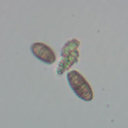Epigallocatechin gallate (EGCG) attenuates infrasound-induced neuronal impairment by inhibiting microglia-mediated inflammation.
Mots clés
Abstrait
Infrasound, a kind of common environmental noise and a major contributor of vibroacoustic disease, can induce the central nervous system (CNS) damage. However, no relevant anti-infrasound drugs have been reported yet. Our recent studies have shown that infrasound resulted in excessive microglial activation rapidly and sequential inflammation, revealing a potential role of microglia in infrasound-induced CNS damage. Epigallocatechin gallate (EGCG), a major bioactive component in green tea, has the capacity of protecting against various neurodegenerative diseases via an anti-inflammatory mechanism. However, it is still unknown to date whether EGCG acts on infrasound-induced microglial activation and neuronal damage. We showed that, after 1-, 2- or 5-day exposure of rats to 16 Hz, 130 dB infrasound (2 h/day), EGCG significantly inhibited infrasound-induced microglial activation in rat hippocampal region, evidenced by reduced expressions of Iba-1 (a marker for microglia) and proinflammatory cytokines (IL-1β, IL-6, IL-18 and TNF-α). Moreover, infrasound-induced neuronal apoptosis in rat hippocampi was significantly suppressed by EGCG. EGCG also inhibited infrasound-induced activation of primary microglia in vitro and decreased the levels of proinflammatory cytokines in the supernatants of microglial culture, which were toxic to cultured neurons. Furthermore, EGCG attenuated infrasound-induced increases in nuclear NF-κB p65 and phosphorylated IκBα, and ameliorated infrasound-induced decrease in IκB in microglia. Therefore, our study provides the first evidence that EGCG acts against infrasound-induced neuronal impairment by inhibiting microglia-mediated inflammation through a potential NF-κB pathway-related mechanism, suggesting that EGCG can be used as a promising drug for the treatment of infrasound-induced CNS damage.





